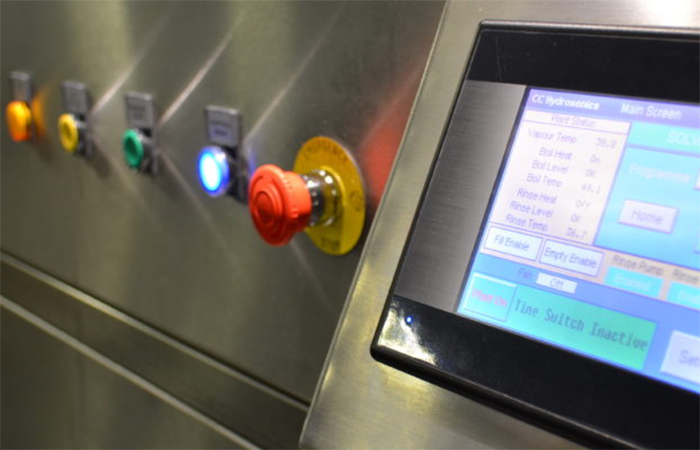
If you are looking to shut down your cleaning process temporarily it is essential that you consider a few key factors as it is not recommended that you just power down the system. Below are a few hints for both Solvent and Water based systems.
Solvent Cleaning Systems
Solvent systems if not closed down correctly can cost a lot to reinstate, the following tips should help reduce the costs and prevent any issues when you come to restart the process.
Drain Down and flush: As these solvents have a positive pressure the solvent will force itself out of the system over time and a full system can dry out over just a couple of weeks if left unattended.
If possible, the system should be drained down into the original or similar drums. This will ensure the solvent does not evaporate when the system is switched off. If there is a level of contamination in the system this should be flushed out with clean solvent (or solvent from the rinse tank). This will ensure you remove any residue which could otherwise solidify (which can be very difficult to clean when dried out) as this can create issues when switching the system back on. Float & level switches as well as filters should be cleaned where possible.
If you cannot empty the system, then it should be left with the power on to ensure the fridge systems continue to run as this will help contain the solvent. If you have sealed lids these are probably air actuated. Where possible an air supply should be maintained as the systems can lose pressure over time. If this is not possible it may be an idea to tape up the lids.
Water Based Cleaning Systems
Any water-based system left to stand for any length of time can generate bacteria in the wash and rinse tanks. This can be very harmful (e.g can lead to things like Legionnaires Disease) and the systems will need a deep clean before they can be safely used again.
If you can, drain down the system and flush out with clean tap water, this includes all pipe work and filters where water and chemical can be trapped. Drain valves should be left open and the tanks allowed to dry out naturally after removing any contamination, just remember to close them again before you fill it back up.
If you are short of time or cannot drain the systems down than you can add a Bleach (Chlorine) to the rinse tanks, however please be cautious when doing so to avoid any chemical reactions taking place This applies especially to DI tanks as DI water has had all the Chlorine stripped out by the filtration system. Once switched back on this will be filtered back out. If possible, you should also empty the water treatment cylinders, but this can be tricky. If you have a complex DI water treatment plant, you should discuss this with your equipment supplier before making any changes to the system.
Should you have any questions please do not hesitate to contact us, we are here to help during these unprecedented times.
Thank You










Simulations show Optimal Design for Bladeless Wind Turbines
"an 80cm mast" Really? I'm short but that's only half my height! Do they mean 800cm?